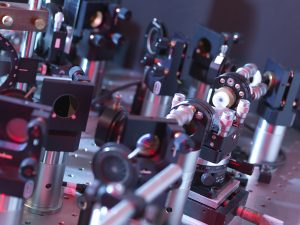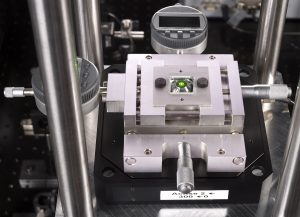The Joint Research Project „Single‐photon sources as new quantum standards“ is a collaboration between National Metrology Institutes, partners from Industry and the research Community in Europe.


The aim of this project is to develop new absolute standard radiation sources, which exploit the discrete and quantum nature of photons. These sources are based on single-photon emitters with calculable photon emission rate and high purity, i.e. very low multiple photon emission probability. Such sources hold promise as new quantum standards with large numbers of applications, e.g. calibration of single-photon detectors, realization of the SI base unit candela, quantum random-number generation, quantum key distribution, sub-shot noise metrology, quantum-enhanced metrology, and photon-based quantum computation
Project description
JRP Number: 17FUN06
JRP Title: Single‐photon sources as new quantum standards (SIQUST)
JRP Timing: Start: 01/06/2018, End: 31/05/2021
Coordinating Organisation: PTB
JRP-Coordinator: Stefan Kück
Publishable summary – link
Planned work and objectives
This project focuses on the development of single-photon sources as new quantum standards. The specific objectives are:
1. To develop single-photon sources as new quantum standards in the visible, near-infrared and telecom wavelength range, based on optically and electrically-driven impurity centres in nano- and bulk diamonds, quantum dots in semiconductor structures and molecules having, simultaneously, photon rates > 1 × 106 photons per second, emission bandwidths < 2 nm and high purity emission indicated by g(2)(t = 0) values < 0.05.
2. To assess new materials and concepts for single-photon sources, such as 2D materials (e.g. hexagonal boron nitride and thin transition-metal dichalcogenides) and coupling designs to optimise the collection efficiency (e.g. micro-resonators, waveguides, optical antennas). To assess the impact of excitation schemes on the quantum optical properties of single-photon sources.
3. To establish sources of indistinguishable and entangled photons based on near infrared (< 1 µm) quantum dot single-photon sources with a visibility > 90 % and novel sensing and measurement techniques based on these sources.
4. To develop metrology infrastructure for traceable single-photon source characterisation, i.e. detectors, amplifiers, single-photon spectroradiometers. 5. To promote the results, to trigger commercialisation of products, and to deliver input to standardisation organisations.
Impact
This project will create impact for end-users (e.g. manufacturers of quantum communication systems) by giving them access to new and improved single-photon sources. High-technology companies working in the field of quantum technologies will be able to accelerate innovation. National Metrology Institutes will use these as new standard sources for radiometry and photometry, enabling them to provide the measurements required to certify new quantum technologies based on the discrete and quantum properties of photons. Schools and academia will benefit from the development of easy-to-use and affordable devices for education in quantum technologies.
